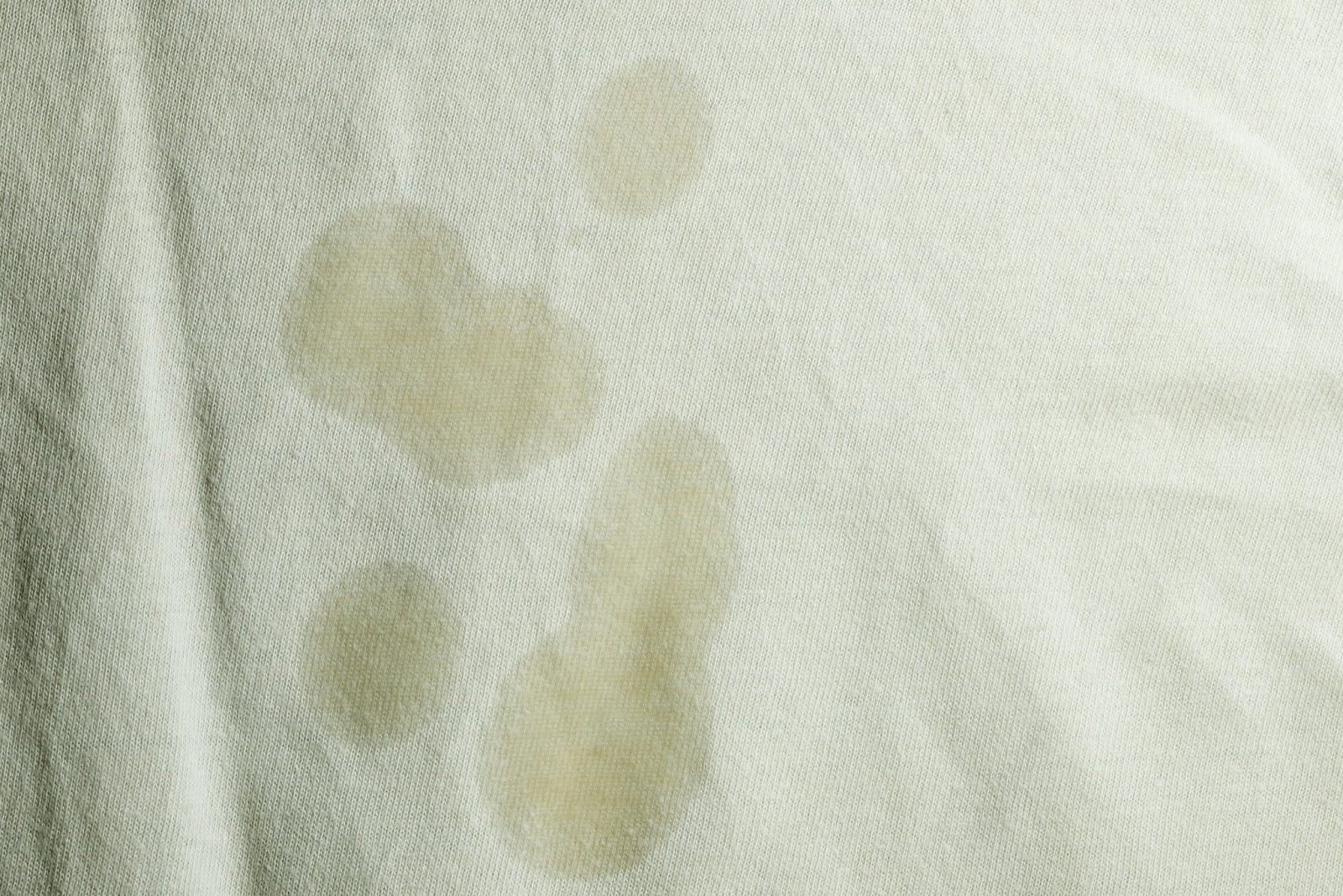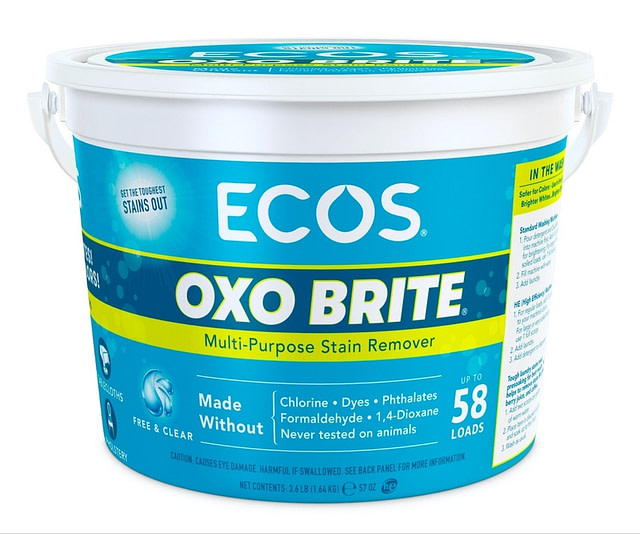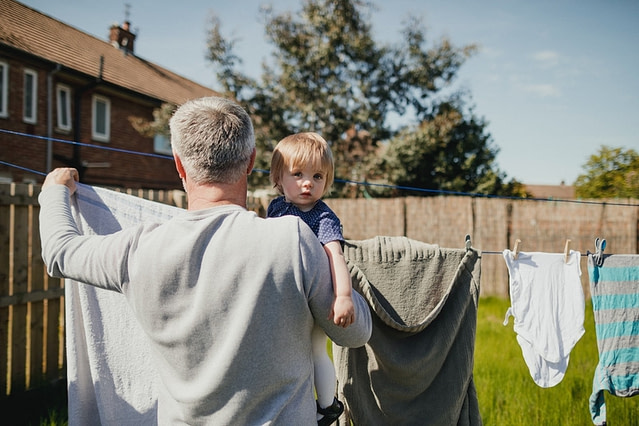How to Get Oil Stains Out of Clothes
7 minute read

While most stains come out in the wash, you might not know how to get oil and grease stains out of your clothes. These unfortunate stains can turn your favorite outfit into an unwearable mess.
Step one to removing oil stains from clothes is having a plant powered laundry detergent made with enzymes and a our formula is 100% vegan formula, like our ECOS Hypoallergenic Laundry Detergent, so you can do your final wash after the stain is pre-treated.
Oil stains are challenging, but we’re here to help make this difficult job a little easier. We’ll share some of our best stain-fighting “recipes” and tips, even using the power of the sun to fight stubborn stains. Read on to discover how to get rid of oil stains on clothes and breathe new life into the garments you thought were destined for the donation pile.
The Oil Stain Solution to Save Your Fabrics
Chances are, your grandmother or a well-meaning neighbor has recommended a DIY oil stain removal method they swear by. However, because of their unpredictable results, these are usually unreliable at best—and damaging at worst when it comes to removing grease stains.
That’s why we recommend sticking with solutions designed exactly for this purpose, like ECOS OxoBrite Multi-Purpose Stain Remover.
No matter what stain removal process you choose, it’s also essential that you get to work on that stain as soon as possible. A stubborn oil stain that’s been sitting is always harder to get out. Also, know the type of fabric that you’re trying to treat, and be sure that any products you use on it are designed for the fabric type. Delicate fabrics like silk and wool may need professional cleaning when you need to remove stains.
With all that said, we’re here to help you rescue your wardrobe (and yourself) from oil stain distress. With the right products, it’s probably easier than you think.
Step 1: Preclean
In the heat of the moment, you may be tempted to set aside the soiled item and worry about it later, or simply throw it in the washing machine and hope for the best. However, nailing the timing is crucial when it comes to getting oil stains out of your clothes.
After the initial oil stain happens, you might think it’s all said and done. However, excess oil can linger on top of fabrics and continue to sink in slowly, which means you might end up with a much larger problem than you had at first. That’s why eliminating a stubborn stain will be far more effective if you first remove any oil still lingering around the tough stain.
To preclean the oil stain, start with these steps:
- Place a piece of paper or cardboard under the stained area and the rest of the clothing to keep the oil from bleeding through.
- Use a damp towel to carefully dab the area.
- Do your best not to spread the oil around or push it deeper into the fabric.
Step 2: Mix Your Stain-Fighting Recipe
Once you’ve dabbed away any excess oil, don’t despair if the spot’s still there. We’re about to get to the most important part: preparing the solution to save your fabric.
The key to fighting tough oil and grease stains is to combine lipase enzymes. These break up lipid molecules, aka oil, to make them smaller and easier for detergents to remove. You also want a solution with minerals, which provide the gentle friction needed to lift stains away.
If you’re wondering if you should have paid more attention in chemistry class, don’t worry—the next steps are actually fairly simple.
What you’ll need:
- 1 oz ECOS Hypoallergenic Laundry Detergent
- ½ scoop of ECOS OxoBrite, a mineral-based multipurpose stain remover
The recipe: In a small bowl, mix your ingredients together to create a paste. That’s it!

Step 3: Treat the Stain
With your oil stain solution in hand, the next step is to lay out your soiled clothing on a clean surface and get to work. Follow these steps for effective stain removal:
- Apply the paste – Dab the paste onto the stain, enough to completely cover it.
- Rub the stain – With an old, soft toothbrush or dry towel, gently rub the mix into the stain. By working the paste directly into the stain, you can more effectively lift and remove the oils. Feel free to add more paste if necessary.
- Let it sink in – Let the paste sit on the stain for 15–20 minutes.
- Rinse and repeat – Rinse the fabric with cool water. If the stain is still visible, you can repeat the process as needed.
Step 4: Wash Normally
When the stain is no longer visible, simply add the garment to the rest of your laundry and run a normal wash cycle.
People often think that hot water will help in situations like this, but the truth is, there’s no need to use hot or even warm water—as long as you’re using a detergent like ECOS that works in all water temperatures.
Hot water accounts for about 90 percent of the energy needed to run a washer, so cold water washing is better for your fabric and better for the environment, too.
Avoid Conventional Stain Removers
You might need some quick thinking and a bit of know-how to fix an oil stain, but the last thing you need is to give yourself additional problems in the process. That’s why we recommend steering clear of conventional cleaning products, and stain removers in particular. Many of these contain bleach and other harsh chemicals that are dangerous for your health and the health of the planet. Plus, they’re hard on garments too.
- Health concerns – Many conventional stain removers contain ingredients like ammonium lauryl sulfate sodium borate, and methylisothiazolinone, chemicals that can be corrosive to your skin and eyes.
- Environmental concerns – Others use aerosol sprays and chemicals like disodium distyrylbiphenyl disulfonate and chlorine bleach, which can be toxic for our ecosystems.
- Damage to clothing – Still others contain harmful chemicals like chlorine bleach, which are not only toxic to people and animals but also can damage your clothing beyond repair.
Use Sun-Powered Stain Removal
Once your clothes are clean, fresh, and oil-free, it’s finally time for their day in the sun. Literally.
After adequately pretreating, laundering, and rinsing your stained garment, the best place to let it dry is in direct sunlight.
The major benefits of drying a stained garment in the sun include:
- UV rays – The ultraviolet rays of the sun work to break down chemical bonds, causing a natural bleaching process. But don’t let that shirt sit too long—because while this can be helpful to fade some stains, long-term exposure can also lead to the overall fading of a garment’s color.
- It’s safe for another attempt – While an electric or gas dryer may set in stains that haven’t been completely removed, line drying does not. If your stain remains after the piece of clothing has air dried, consider giving pre-treatment another shot.
The benefits of sun-powered stain removal aren’t to be overlooked. Plus, you’ll be conserving energy by avoiding the dryer, saving you money on utilities and making a positive contribution to the planet.

Preventing Oil Stains Before They Happen
To prevent further stains in the future, keep an eye out for foods, objects, and products that might catch you by surprise, such as:
- Cooking spray
- Butter and margarine
- Oil-based hair care products
- Oil-based skincare products
- Makeup
- Machinery
- Gasoline
You can also avoid clothing-related heartbreak by ensuring you check your pockets before you toss items into the wash. Many favorite t-shirts have perished to those dark spots of oil simply because we forgot to take that cherry lip balm out of our sweatpants pocket.
Of course, oil stain accidents happen—and now that you’re armed with our guide on how to handle them, you should feel free to continue enjoying all that basil-tomato-mozzarella goodness, with plenty of olive oil. When you’re gearing up to treat yourself with an oil-based hair mask or change the car’s motor oil, however, it always helps to wear an apron.
Save Yourself From Oil Stains With ECOS
Tough stains can be a pain, but few things are more satisfying than seeing the oily stain fade and your favorite piece of clothing come back to life. With these tips, you should be well-prepared to contend with the worst that oil has to offer, but if you’re ready for the easy solution, look no further than ECOS. Equally important to oil stain care is knowing how to properly care for and wash your clothes on a regular basis. Whether it’s learning how to wash white clothes to preserve that bright white color, or how to wash colored clothes to keep those vibrant hues, we have the tips and resources to help you through it all. Knowing how to separate laundry can also be extremely beneficial to your laundry routine.
Our laundry detergents and stain removers are sure to stop oil stains where they start. Explore our safer, sustainable cleaning products to learn more.
